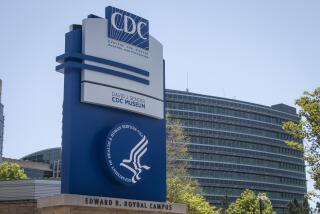Life-and-Death Budget Decision
- Share via
There is $6.1 million in state grant money sitting unallocated in the county treasury. The money was sent to the county as a block grant to replace health funds lost when Gov. George Deukmejian cut them out of the state budget to get around spending limits imposed by the Gann initiative. In his veto, the governor said the counties had the discretion to use the money for high priority programs, such as medical care.
That’s how it should be spent. The question now is: How much of the $6.1 million will actually go to life-saving services? According to staff recommendations being drawn up for the Board of Supervisors, the answer is: Definitely not enough.
Legally, the county can spend the money any way it chooses. But it has a moral obligation to allocate the bulk of the funds to the needy and to the seriously underfunded emergency medical services network.
For several years, hospitals have been treating an increasing number of needy patients with a decreasing amount of reimbursement funds. The patients include not only the indigent but an estimated one out of every five residents without health insurance. Continued underfunding increases the risk of forcing trauma centers and emergency rooms to close, which jeopardizes every resident who might need that care because of an accident or medical emergency.
The county staff plan is to use only $1 million of the state funds for the medically indigent and another $2.3 million for other health and social programs and put $2.5 million into the county’s contingency fund to cover such budget items as pay raises. That’s wrong. The Board of Supervisors should allocate most, if not all, of the grant money for critical health and social service programs. Budget emergencies need attention, but life and death emergencies demand a higher priority.
More to Read
Sign up for Essential California
The most important California stories and recommendations in your inbox every morning.
You may occasionally receive promotional content from the Los Angeles Times.













